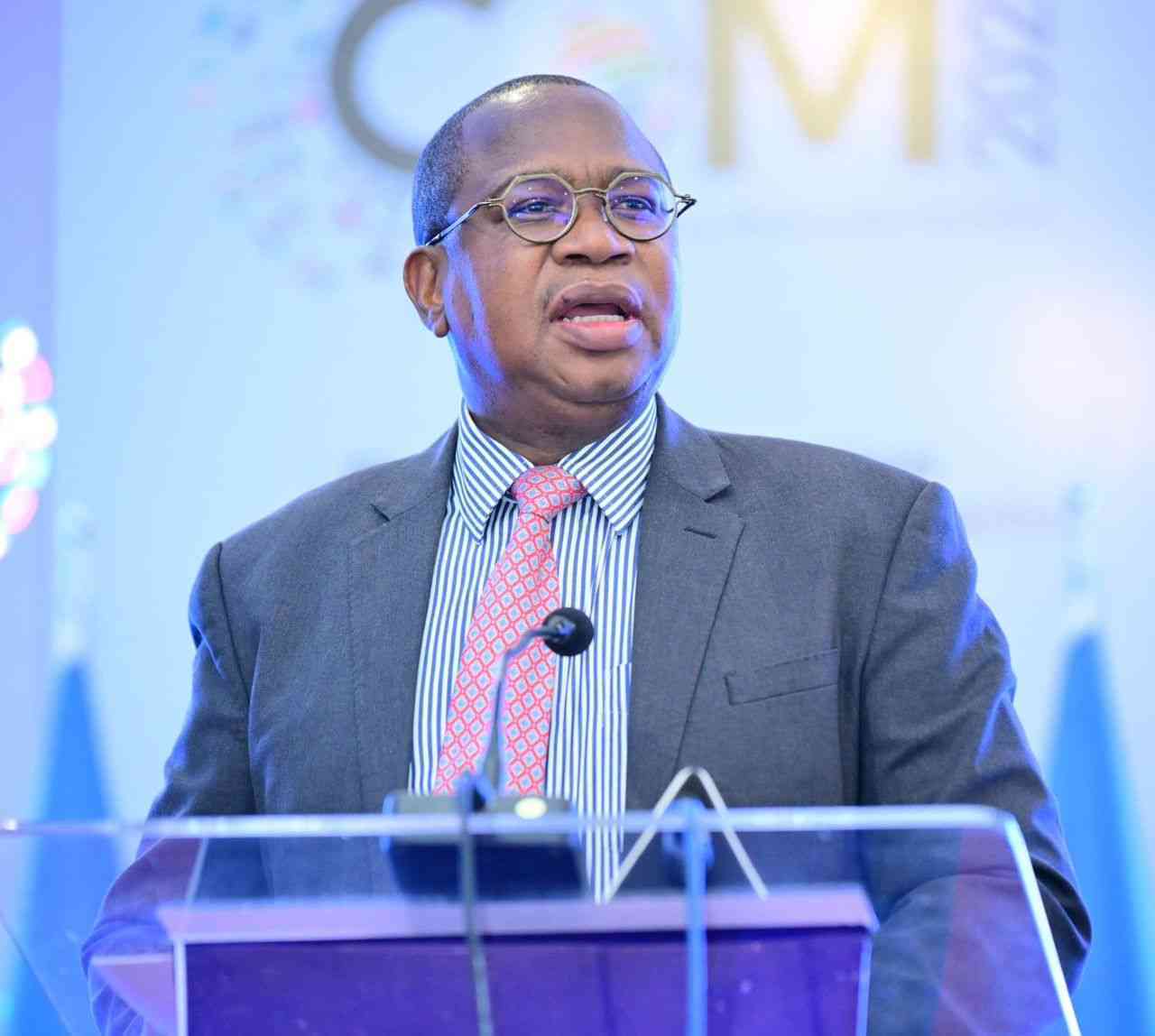
A NATIONAL budget serves three key purposes: Assessing the past year’s performance, identifying challenges and opportunities, and outlining the government’s policy direction for the coming year.
The 2025 National Budget, presented in parliament a fortnight ago, was an opportunity to address Zimbabwe’s pressing socio-economic challenges and set a bold vision for the future.
Unfortunately, it misses the mark. This critique evaluates the budget based on its retrospective analysis, fiscal performance, and policy direction, revealing troubling inconsistencies and misplaced priorities.
Retrospective analysis
The budget rightly notes global challenges such as financial market volatility, climate change and geopolitical tensions. While these primarily impact advanced economies, they also create opportunities for emerging markets, including those in Sub-Saharan Africa.
Zambia, for example, is poised for growth due to infrastructure investments and successful debt restructuring, enabling a projected 20% revenue increase.
Zimbabwe, however, has a reported GDP growth of 6% for 2024, but this figure is problematic, as it rests on several questionable assumptions:
A miracle without infrastructure?
- EOS data analytics provides technology for modernising agriculture
- Zim agric production remains low: WB
- Collateral registry and access to credit
- U.S. cuts off Burkina Faso from Africa duty-free trade program
Keep Reading
The government predicts a miraculous recovery in agriculture, from a contraction of -15% in 2024 to a growth of 12,8% in 2025, representing an astonishing 183% turnaround.
This projection relies on expectations of increased rainfall, but fails to account for critical infrastructure gaps in water, electricity, and transport.
In 2024, water supply contributed -4% to GDP and while it is expected to grow marginally to 3,9%, this is insufficient to drive the projected agricultural growth. Adequate infrastructure investment is the missing link in this optimistic forecast.
Exchange rate stability a pipe dream?
The government’s claim of achieving a stable exchange rate is contradicted by reality. The Zimbabwe Gold (ZiG) currency, launched in April this year, has suffered staggering depreciation, with the official rate moving from 1:13 to 1:43 against the United States dollar (USD) by September, a 230% depreciation.
This instability undermines inflation control and erodes public trust in the currency. An attempt to launch a local currency has thus far been futile because of the erosion of trust in the country’s monetary policy and system.
Fiscal and monetary tightness
The notion of tight fiscal policy is hard to reconcile with the actual budget utilisation data:
The Office of the President overspent by 115%.
Defence and Security overshot their allocation by 98%.
Meanwhile, primary education received only 68% of its allocation, higher education received 53,2% and health care has a utilisation of 52% of its budget
This misallocation undermines claims of fiscal discipline and highlights skewed priorities.
Performance and projections
The government’s primary tool for assessing performance, the Composite Indicator of Economic Activity (CIEA), mirrors the gross domestic product (GDP) figures but lacks transparency and methodological clarity. It raises questions about its value in tracking economic performance.
On foreign currency receipts, the budget reports a 17,9% increase. However, this figure is not inflation-adjusted and likely reflects price increases rather than real growth.
A 54% rise in receipts from foreign investment against only a 23% export growth raises concerns about potential accounting irregularities, echoing scandals like the Gold Mafia exposé.
Sectoral performance: Hits, misses
The mining sector, touted as a cornerstone of the economy, is underperforming. Despite 277 mining investment licences issued by Zimbabwe Investment and Development Agency, merchandise exports remain dominated by tobacco (US$760 million) and gold (US$1,5 billion).
Other key minerals like diamonds, PGM and lithium showed minimal or negative growth (-20% ,-8,3% and -5,9%, respectively), suggesting inefficiencies in resource governance and revenue collection. This is also likely indicative of the leakage in the mining sector. The Ministry of Finance must do more to secure income from this sector.
It seems very odd that with a predicted investment growth of US$9,7 billion from investment licences issues the merchandise exports rely primarily on small scale production of tobacco and gold mining.
The lack of a coherent strategy for scaling up production undermines the sector’s potential. This sector could provide access to tax revenue as opposed to levelling punitive tax on households.
Manufacturing saw a -14% decline, with minimal investment in technology and machinery. This raises concerns about how capacity utilisation targets will be met.
Similarly, the Victoria Falls Stock Exchange (VFEX) remains sluggish despite its tax haven status, reflecting broader investor confidence issues tied to political risk and governance challenges.
Overcapitalised, underperforming
The banking sector has an average Capital Adequacy Ratio (CAR) of 40%, far exceeding the global regulatory minimum of 8% and 12 % for tier 1.
While this overcapitalisation indicates resilience, it also signals risk aversion or a lack of profitable lending opportunities. The demand for borrowing may also be low due to the very high policy rate of 35% for local currency borrowing and 20% for USD.
This is further supported by the fact that women and youth received less than 10% of loans, reflecting systemic exclusion. An environment with low access to capital also means growth for SME or start-ups and low. Evidently, women and young people only accessed less than 10% of banking loans.
The broad money supply shows that Zimbabwe remains a dollarised economy, with less than 20% of broad money in local currency. This continues to raise questions as to why the country is undergoing the expense of launching a local currency when it is not the common currency. This underscores the lack of trust in the local financial system.
Misaligned priorities
Public finances are characterised by inefficiencies and over-expenditure in politically connected sectors. For example:
Defence and security received almost the same allocation as healthcare despite the pressing needs of the population.
The government’s debt, recorded at US$21,1 billion, remains stagnant, with 50% attributed to penalties and arrears. Efforts to clear arrears have failed to make significant progress.
The focus on projects like the new city in Mt Hampden, with over US$150 million invested, further highlights misplaced priorities when basic services like electricity, water and healthcare face severe underfunding.
Following the mysterious fire, Mbare Musika is now under a public-private partnership. However, as this did not go to open tender, there is no evidence in the public domain of how the traders’ market will be managed going forward and the terms of the new landlord. This is critical given the market is utilised by 10 000 traders who may be disenfranchised under the new arrangements.
In addition, there are new debt areas of compensation to farmers of US$3,5 billion and US$$2 billion debt to the Mutapa Investment Fund. The former is a debt arising out of the need to compensate white farmers, who had their property illegally taken from them during the chaotic farm invasions at the turn of the millennium.
Note that this Bill is not to do with reform of underutilised land, but has to do with cessation of property owned without the constitutional mandate. This debt should be treated against repatriation of proceeds from the individuals that undertook these criminal activities.
The operational benefits of Mutapa Investment Fund, which has been taken out of the legislative purview must be examined with clarity on how the country has borrowed money from this fund in light of the undervalued state assets it took over. Any debt arrangement must have legislative oversight before they are passed.
Key concerns
The budget states that the country has fiscal framework of US$38,2 billion, which are the overall expenses. However, public revenue is US$7,5 billion and public expenses are US$7,7 billion.
This is problematic because of Zimbabwe’s pariah state on account of human rights abuses. It has limited access to external financing arrangements. The debt crisis also means that there are very limited credit lines still available to the country.
The budget states that there may access only US$800 million from external partners. This situation is further exacerbated by that the public revenue relies on 50% from household income tax (income and VAT tax).
Overall, this means the country is severely exposed as any business closures or other negative impacts on household incomes will increase the fiscal exposure.
Given this position, the litany of tax charges presented in the budget, which are targeting mostly household income, are going to reduce household incomes.
With increased tax on the food services industry, this will impact local growers as in the medium-term this will reduce demand on these items. The punitive tax structure on the informal sector, which is not accompanied by increasing income, will also put a restraint on this sector.
Zimbabwe has gone through a drought season following the El Niño phenomenon and the agriculture sector is still a long way from recovery. With the continued impact of climate change, which also extends to health effects, the country is in need of a budget position that seeks preservation and resilience.
The 2025 National Budget, though ambitious in its projections, falls short in addressing Zimbabwe’s pressing challenges. Its reliance on unsustainable assumptions, misallocation of resources and lack of transparency undermine its credibility.
Real economic growth requires structural reforms, investment in critical sectors and a commitment to fiscal discipline. Without these, the national budget risks perpetuating the same cycle of underperformance and economic stagnation.
Mutambasere is a development economist at The Africa Centre for Economic Justice.











